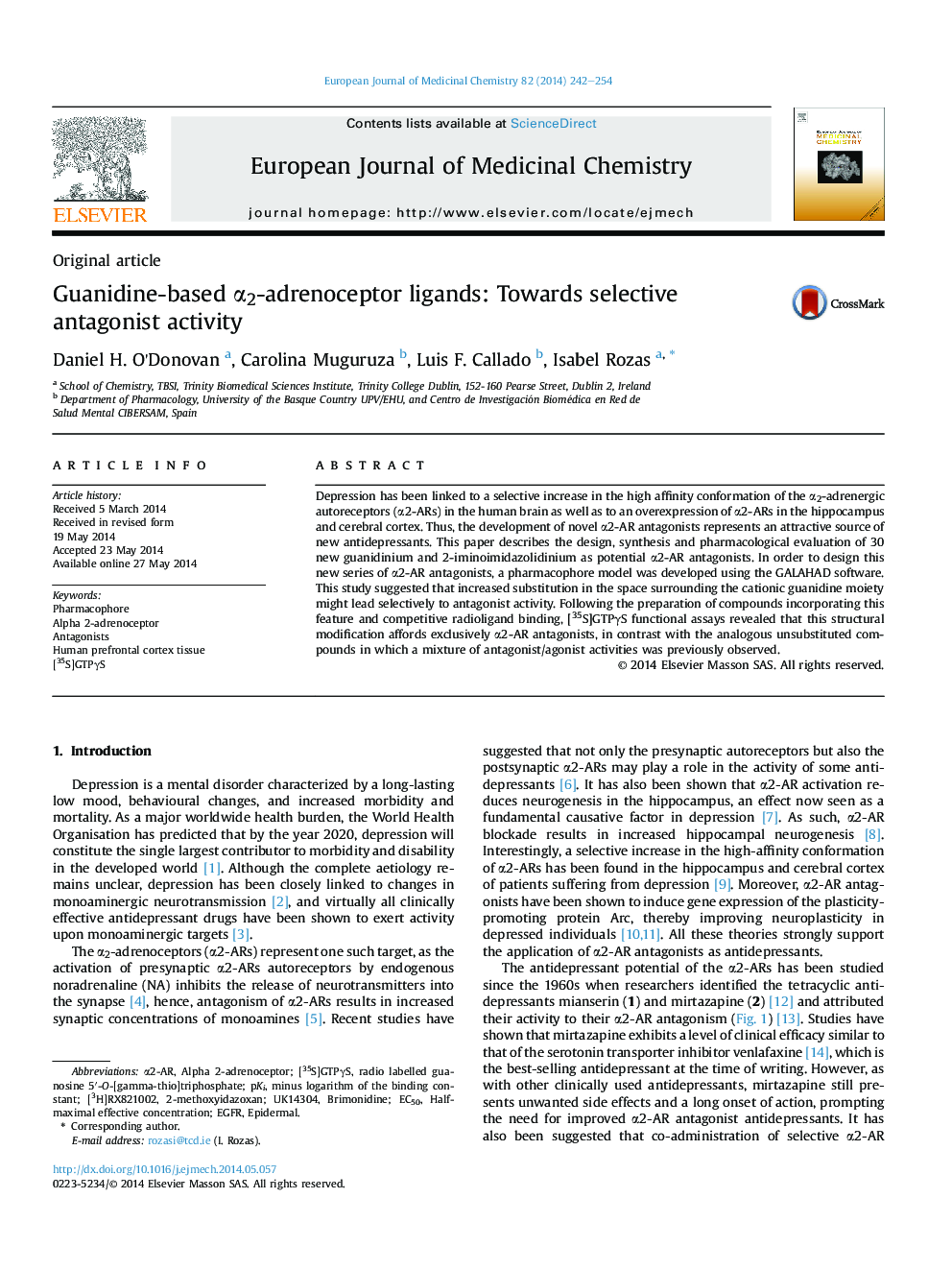| Article ID | Journal | Published Year | Pages | File Type |
|---|---|---|---|---|
| 1395731 | European Journal of Medicinal Chemistry | 2014 | 13 Pages |
•A pharmacophore model has been developed to design new α2-AR antagonists.•Increased substitution around the guanidinium will selectively lead to antagonists.•Thirty new compounds incorporating a multiply substituted guanidinium were prepared.•Functional assays showed that this feature exclusively yields α2-AR antagonists.
Depression has been linked to a selective increase in the high affinity conformation of the α2-adrenergic autoreceptors (α2-ARs) in the human brain as well as to an overexpression of α2-ARs in the hippocampus and cerebral cortex. Thus, the development of novel α2-AR antagonists represents an attractive source of new antidepressants. This paper describes the design, synthesis and pharmacological evaluation of 30 new guanidinium and 2-iminoimidazolidinium as potential α2-AR antagonists. In order to design this new series of α2-AR antagonists, a pharmacophore model was developed using the GALAHAD software. This study suggested that increased substitution in the space surrounding the cationic guanidine moiety might lead selectively to antagonist activity. Following the preparation of compounds incorporating this feature and competitive radioligand binding, [35S]GTPγS functional assays revealed that this structural modification affords exclusively α2-AR antagonists, in contrast with the analogous unsubstituted compounds in which a mixture of antagonist/agonist activities was previously observed.
Graphical abstractFigure optionsDownload full-size imageDownload as PowerPoint slide
